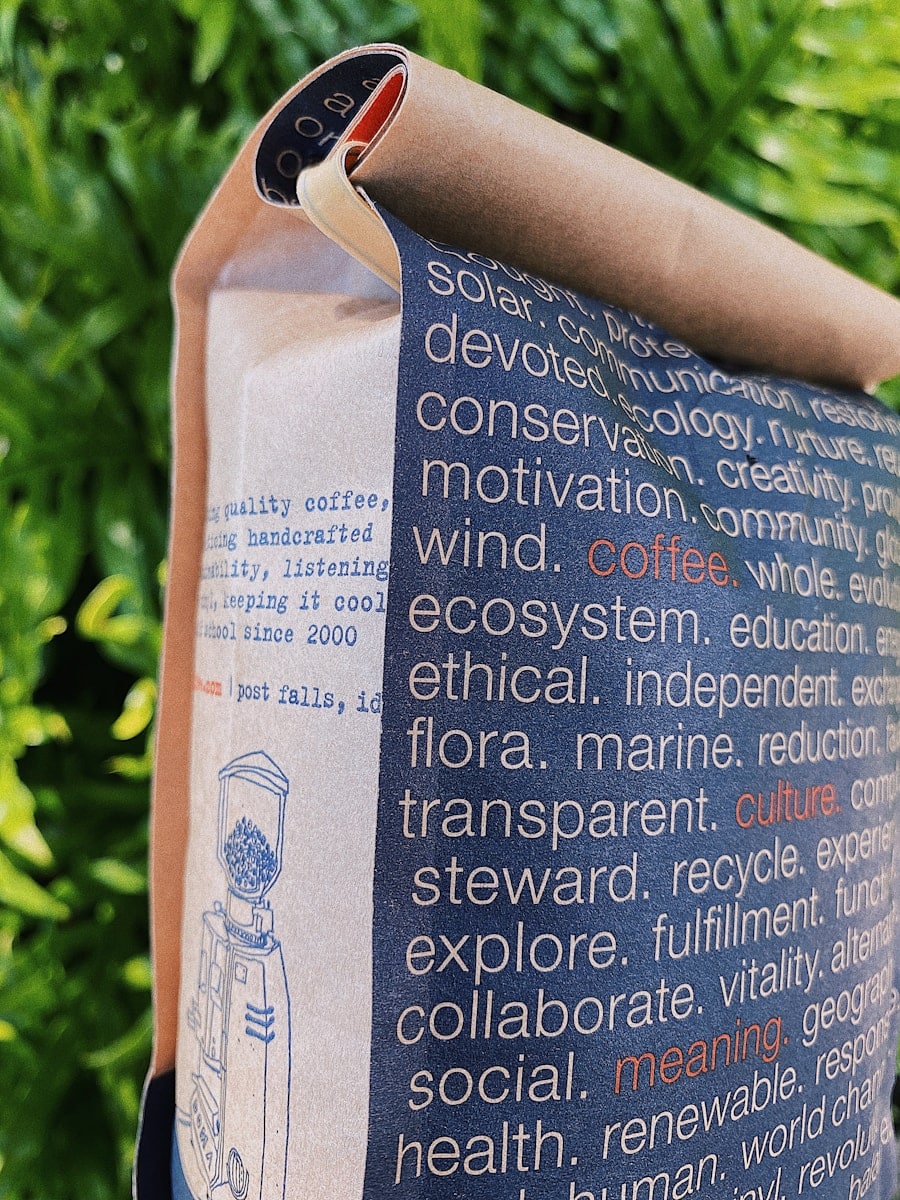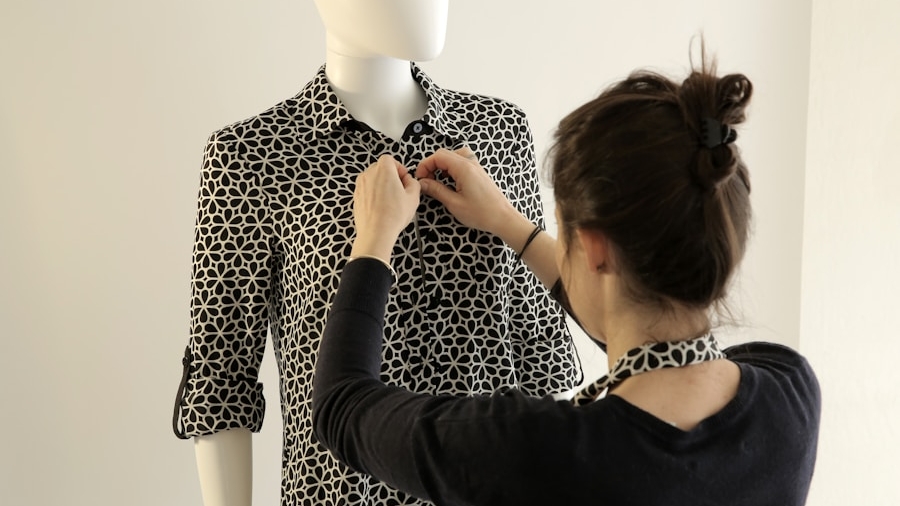The intersection of artificial intelligence (AI) and sustainable fashion is a burgeoning field that holds immense potential for transforming the textile industry. As the fashion sector grapples with pressing environmental challenges, including waste generation, resource depletion, and carbon emissions, AI emerges as a powerful ally in the quest for sustainability. The integration of AI technologies into various facets of fashion not only enhances efficiency but also fosters innovative solutions that align with eco-friendly practices.
This synergy between AI and sustainable fashion is not merely a trend; it represents a paradigm shift that could redefine how garments are designed, produced, and consumed. The urgency for sustainable practices in fashion is underscored by alarming statistics. The industry is responsible for approximately 10% of global carbon emissions and is a significant contributor to water pollution and waste.
In response to these challenges, brands are increasingly turning to AI to streamline operations, reduce environmental footprints, and promote ethical consumption. By harnessing the capabilities of machine learning, data analytics, and automation, the fashion industry can not only mitigate its negative impacts but also pave the way for a more sustainable future.
Key Takeaways
- AI is revolutionizing the fashion and textile industry by driving sustainability through innovative technologies and processes.
- AI plays a crucial role in the development of sustainable materials by enabling the discovery of new eco-friendly alternatives and enhancing existing materials.
- AI is transforming supply chain management in the fashion industry by optimizing processes, reducing waste, and improving transparency and traceability.
- Sustainable design processes are being enhanced by AI through the use of data-driven insights, material optimization, and waste reduction.
- AI is contributing to the circular economy in fashion by enabling efficient recycling, upcycling, and waste reduction strategies.
- Predictive analytics powered by AI are helping fashion brands make informed decisions to minimize environmental impact and improve sustainability.
- AI is enabling personalized sustainable fashion by analyzing consumer data and preferences to create tailored and eco-friendly products.
- The future of AI in sustainable fashion and textiles looks promising, with continued advancements in technology driving further innovation and sustainability efforts.
AI’s Role in Sustainable Material Development
One of the most promising applications of AI in sustainable fashion lies in the development of eco-friendly materials. Traditional textile production often relies on resource-intensive processes that contribute to environmental degradation. However, AI can facilitate the discovery and optimization of sustainable materials by analyzing vast datasets to identify alternatives that are both functional and environmentally friendly.
For instance, machine learning algorithms can sift through extensive databases of natural fibers, synthetic materials, and innovative textiles to recommend options that minimize ecological impact while meeting performance standards. Moreover, AI-driven simulations can predict how new materials will behave under various conditions, allowing designers to experiment with combinations that might not have been feasible through conventional methods. This capability not only accelerates the material development process but also reduces waste by enabling designers to test ideas virtually before committing to physical prototypes.
Companies like Bolt Threads are already leveraging AI to create bioengineered materials such as mycelium leather, showcasing how technology can lead to groundbreaking advancements in sustainable textiles.
AI’s Impact on Sustainable Supply Chain Management

The complexity of global supply chains in the fashion industry often leads to inefficiencies and environmental harm.
By utilizing AI algorithms, brands can monitor their supply chains more effectively, identifying bottlenecks and inefficiencies that contribute to waste and excess resource consumption.
For example, AI can analyze historical data to forecast demand accurately, allowing brands to produce only what is necessary and reducing overproduction—a significant issue in fast fashion. Furthermore, AI can enhance transparency within supply chains by tracking materials from their origin to the final product. Blockchain technology, when combined with AI, can provide immutable records of each step in the supply chain, ensuring that materials are sourced ethically and sustainably.
This level of transparency not only builds consumer trust but also encourages brands to adhere to higher ethical standards. Companies like Everledger are pioneering this approach by using blockchain and AI to trace the provenance of materials, thereby promoting responsible sourcing practices.
AI’s Influence on Sustainable Design Processes
The design phase is critical in determining a garment’s overall sustainability. AI tools are revolutionizing this process by enabling designers to create more efficient and eco-friendly products. Generative design algorithms can analyze various parameters—such as material properties, production methods, and consumer preferences—to generate design options that optimize for sustainability.
This approach allows designers to explore a wider range of possibilities while ensuring that their creations align with sustainability goals. Additionally, AI can assist in creating virtual fitting rooms and augmented reality experiences that reduce the need for physical samples.
Companies like Unspun are utilizing AI-driven technologies to create custom-fit jeans on demand, minimizing excess inventory and promoting a more sustainable approach to fashion consumption.
AI’s Contribution to Circular Economy in Fashion
The concept of a circular economy is gaining traction as a viable solution to the linear “take-make-dispose” model prevalent in the fashion industry. AI plays a pivotal role in facilitating this transition by enabling better recycling processes and promoting the reuse of materials. Machine learning algorithms can analyze textile waste streams to identify which materials can be recycled or repurposed effectively.
This capability not only enhances recycling rates but also reduces the demand for virgin resources. Moreover, AI can support take-back programs by predicting which items are likely to be returned or recycled based on consumer behavior patterns. By understanding these trends, brands can design products with end-of-life considerations in mind, ensuring that garments can be easily disassembled or recycled at the end of their lifecycle.
Companies like H&M are exploring these avenues by implementing AI-driven systems that streamline their garment collection processes, thereby contributing to a more circular fashion ecosystem.
AI’s Role in Predictive Analytics for Sustainable Fashion

Predictive analytics powered by AI is transforming how fashion brands approach sustainability by enabling data-driven decision-making. By analyzing consumer behavior, market trends, and environmental impacts, brands can make informed choices that align with sustainability objectives. For instance, predictive models can forecast which styles will resonate with consumers while minimizing overproduction risks.
This capability allows brands to align their production schedules with actual demand rather than relying on historical sales data alone. Additionally, predictive analytics can help brands assess the environmental impact of their operations more accurately. By modeling various scenarios—such as changes in material sourcing or production methods—brands can identify strategies that reduce their carbon footprint and resource consumption.
This proactive approach empowers companies to implement sustainable practices more effectively while maintaining profitability.
AI’s Impact on Personalized Sustainable Fashion
Personalization is becoming increasingly important in the fashion industry as consumers seek unique products that reflect their individual styles and values. AI enables brands to offer personalized sustainable fashion options by analyzing customer preferences and behaviors. Through advanced algorithms, companies can recommend products that align with consumers’ values regarding sustainability while also catering to their aesthetic preferences.
For example, AI-driven platforms can curate collections based on individual customer profiles, suggesting items made from sustainable materials or produced through ethical practices. This level of personalization not only enhances customer satisfaction but also encourages consumers to make more conscious purchasing decisions. Brands like Stitch Fix are already utilizing AI algorithms to provide personalized styling recommendations that prioritize sustainability alongside style.
The Future of AI in Sustainable Fashion and Textiles
As the fashion industry continues to evolve, the role of AI in promoting sustainability is expected to expand significantly. The ongoing development of advanced technologies such as machine learning, natural language processing, and computer vision will further enhance the capabilities of AI in addressing environmental challenges within the sector. Future innovations may include more sophisticated material discovery processes, enhanced supply chain transparency tools, and even greater personalization options for consumers.
Moreover, as consumer awareness regarding sustainability grows, brands will increasingly be held accountable for their practices. The integration of AI into sustainable fashion will not only help companies meet these expectations but also drive industry-wide change towards more responsible practices. The potential for collaboration between tech companies and fashion brands will likely lead to groundbreaking solutions that redefine what it means to be sustainable in the textile industry.
In conclusion, the fusion of artificial intelligence with sustainable fashion represents a transformative opportunity for an industry at a crossroads. By leveraging technology to enhance material development, optimize supply chains, influence design processes, contribute to circular economies, utilize predictive analytics, and personalize consumer experiences, the fashion sector can move towards a more sustainable future. As we look ahead, it is clear that AI will play an integral role in shaping the next generation of fashion—one that prioritizes both style and sustainability.
In a related article, Conversational Commerce explores how AI is revolutionizing the way businesses interact with customers through messaging apps and chatbots. This technology is not only enhancing customer service but also driving sales and improving overall user experience. Just like AI is transforming sustainable fashion and textiles, it is also reshaping the way we shop and engage with brands online.
FAQs
What is sustainable fashion and textiles?
Sustainable fashion and textiles refer to clothing and fabric materials that are produced in an environmentally and socially responsible manner, with a focus on minimizing the negative impact on the environment and promoting ethical labor practices.
How is AI driving innovations in sustainable fashion and textiles?
AI is driving innovations in sustainable fashion and textiles by enabling more efficient and sustainable production processes, such as optimizing supply chain management, reducing waste, and developing eco-friendly materials.
What are some examples of AI applications in sustainable fashion and textiles?
Some examples of AI applications in sustainable fashion and textiles include using machine learning algorithms to predict consumer demand, optimizing production processes to minimize energy and water usage, and developing new sustainable materials through computational design.
What are the benefits of using AI in sustainable fashion and textiles?
The benefits of using AI in sustainable fashion and textiles include reducing the environmental impact of production processes, improving resource efficiency, and enabling the development of innovative sustainable materials and products.
Are there any challenges associated with using AI in sustainable fashion and textiles?
Some challenges associated with using AI in sustainable fashion and textiles include the need for investment in technology and infrastructure, ensuring ethical and transparent use of AI, and addressing potential job displacement in the industry.

